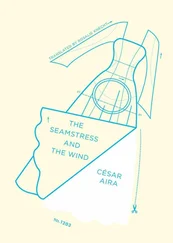Choosing the “installment” format was a result of this kind of reasoning. He had come to it by retreating from more radical formats; for months he had played around with the idea of creating an album of collectible figurines, the figurines of the Miracle Cures, which would be sold in kiosks in sealed envelopes. . But the operational aspect created too many complications, and there were even some impracticalities on the conceptual side. So he rejected the idea of the album, as he had rejected many other possibilities that were as daring or more so. From these grand escalations of fantasies he would return to “degree zero”: the book. And he would take off again from there, because the format of the book, with its classic simplicity that nobody respected more than he, limited him excessively. All that to-ing and fro-ing had converged at a point in the middle, which was the collectible installment, published weekly. The frequency would dictate his work rhythm, and the advantage of this over a book was that he would not have to finish the entire oeuvre before beginning to publish; that last part was the most important, because he had not considered a definite end to his labors; he saw it, instead, as an open oeuvre, which could incorporate into a fixed format the changes in his ideas, perspective, and even moods.
His fantasies of being an avant-garde editor turned out not to be futile, as many of the ideas arising from them were incorporated into the format he finally chose; and the “installment” plan was very hospitable to all of them, an additional reason to opt for it.
Illustrations were one of those features he wanted to incorporate. The idea came from some plans he had discarded, such as the figurines (and others), but it was also a natural for installments. When has anybody ever seen installments without illustrations? Once he’d heard of a dictionary that had been published in installments, but besides this seeming too absurd to be true, a dictionary was ideal for illustrations, it carried them within, virtually, for a dictionary is a systematic catalogue of examples.
Needless to say, he himself would make them. He would never even dream of asking an artist to collaborate, so great was his horror of relinquishing absolute control over any aspect of his work. He was reasonably skilled at drawing, which he practiced every day; however, they always turned out abstract. Only by accident did his drawings ever represent anything. Nevertheless, he could, like anybody else, draw a comprehensible diagram, though he only did so when he was planning to fabricate something. Recently he had filled a notebook with plans and models for fantasy garments, some in color.
These garments, which in reality had nothing to do with the Miracle Cures, as they were imaginative and highly elaborate items of clothing conjured up with the exuberance of fantasy, nevertheless constituted an important part of the project. In order to explain how he made them (because he had also had to invent this explanation, ex post facto), he had to start with the value of a text, any text, and by extension, of the one he might write about the Miracle Cures. Reflecting on the roots of value, he reached the conclusion that it was necessary to include an autobiographical component. This should never be missing, and not out of narcissism but rather because it was the only mechanism that would allow the writing to endure; and he wanted, oh, how he wanted! for his writing to withstand time, this also not out of intellectual narcissism but because with time his installments would take on the value of antiques, a value in and of itself, independent of the uncertain values of truth or intelligence or style.
As opposed to other objects, texts withstand time only when they are associated with an author whose actions in life — of which their texts are the only tangible testimony — excite the curiosity of posterity. Such posthumous curiosity is created by a biography full of small, strange, inexplicable maneuvers, colored in with a flash of inventiveness that is always in action, always in a state of “happening.”
In any case, one day, out of the blue, while he was watching television, it occurred to him how delightful it would be to fabricate some garments, though more than garments they would be wire frames that would hold colorful fabrics — as well as wreaths, horns, halos, and bells — that he could wear at home to relax in or to energize himself or for any other purpose that might occur to him; the purpose didn’t matter because the goal of this one-man theatrical wardrobe was to provide an interesting anecdote. . The purpose would formulate itself, and it would fit perfectly into his aesthetic-theoretical-autobiographical system and contribute to the creation of his personal mythology. It didn’t matter what an enormous blunder this would be (even if in the privacy of his own family); at a certain point, he was willing to sacrifice himself for his work. Moreover, by taking this route he would reach a stage where the blunder, the fear of making a fool of himself, all of it, would be neutralized by being absorbed into the normalized and accepted figure of the Eccentric.
The fact that these garments, according to his idea of them, were a kind of architectural construction made of wire and fabric he would have to get into, meant he had to think up a way to equip them with a system of pleats that would allow him to sit down or walk around or even sit in the lotus position or dance. As a result, the drawings became more and more complex. Moreover, as they would be very large and bulky, and the apartment he lived in with his family was already crowded, he would have to plan for a second system of pleats that would allow him to store them in small stackable boxes, or ideally, in a folder.
The sketches he’d already made of these garments provided him with “ready-made” material he could use to illustrate the first installments; after that, he’d see. In any case, it wasn’t worth worrying about at this stage. First he had to focus on the texts, and the illustrations would naturally ensue from them. For now, it was enough to know that he would make them, and this knowledge was enough to fill his expectations with vague figures.
As far as the text went, all he had to do was cull from his thousands of manuscript pages and begin to create the great collage. He could start anywhere; no introduction was necessary because the subject was already well defined in the collective imagination. Indeed, the charm of this material was like that of versions of a well-known story. Let’s take one from the Bible, Dr. Aira said to himself, the one about Samson. . A funny story could have baldness as its central theme, which becomes a matter of state to the Philistines, and it would be funny because somehow or other everybody knows that Samson’s strength resided in his hair. The same thing was happening here: life, death, illness — there’s nobody who doesn’t know what they’re all about, which would allow him to create small, delightful variations that would seem like inventions even if they weren’t (thereby sparing the author the exorbitant effort of inventing a new story).
Writing was something he couldn’t do in a single block, all at once. He had to keep doing it, if at all possible, every day in order to establish a rhythm. . The rhythm of publication, so checkered due to the imponderables of the material aspects, could be regularized through the installment format, which also took care of the quantity of the product and its basic tone, that of “disclosure.” These symbolic rhythms materialized when they were used as a framework for the rhythm at which things actually occurred. For in the meantime, life, both public and private, was continuing, and this andante cantabile system prevented real life from transpiring as a marginal event; through this rhythm it recovered not only the general flow but also each and every anecdotal detail, even the most heterogeneous ones. In this way he could be sure he wouldn’t miss anything, nor would he fail to fully utilize anything. An episode like the one with the ambulance, which had left him very perturbed (so much so that it had been one of the triggers, along with his financial good fortune, for deciding to move into action), ceased to be merely one more “example” of Dr. Actyn’s persecution of him, and became a particularity of the Universe of facts where there were no hierarchies or generalizations.
Читать дальше












